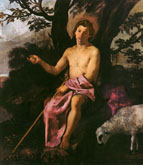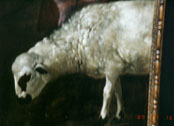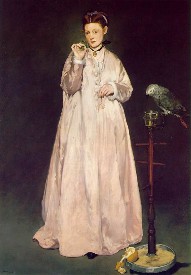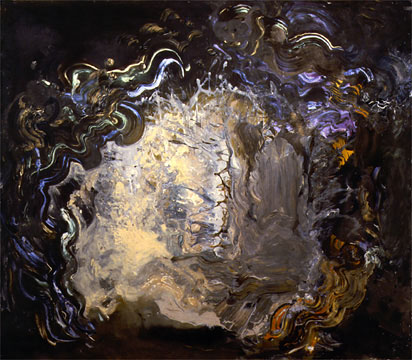|
The painting below is:
Saint John The Baptist, circa 1620 to 1622, painted by Diego Velazquez,Croton,
Massachusetts: Banielson Collection. (On loan to the Art Institute of
Chicago.)
image credit: scan by Carol Sutton©
|
Photograph of half sheep and frame taken
inside the Art Institute of Chicago,by Carol Sutton on her first trip
to Chicago on November 16, 1989. Computer set camera date is
impregnanated on the film, by choice of the artist.
It was compositionally radical of
Velazquez to cut the sheep in half. This sheep looks particularly pious
as if were a saint in a painting by Zurbaran. Franciso de Zurbaran
practiced his art in Seville and he was born in 1598, exactly one year
prior to Diego Velazquez, who was born in 1599. "Behold the lamb of
God" (John 1:29, Bible). Zurbaran also did a painting on Saint John
the Baptist in the Wilderness, circa 1635, Cathedral, Seville, with
violets, ochers, whites, and browns. It is interesting to compare Zurbaran's sheep to that of
Velazquez's sheep.

image credit: photograph and scan by Carol
Sutton©
|

image credit:
http://192.41.13.240/artchive/m/manet/
thumbs/woman_with_parrot.jpg
|
The painting to the left is:
Woman with A Parrot also titled Young Woman in 1866, date:1866, painted
by Edourd Manet, oil on canvas, 72 /78" x 50 5/8" 9185.1 x 128.6cm),
signed lower left: Manet, Collection the Metropolitan Museum of Art,
New York
|


 5.
5. 


![]()
![]() or take me to the
Breda lead in page
or take me to the
Breda lead in page![]()